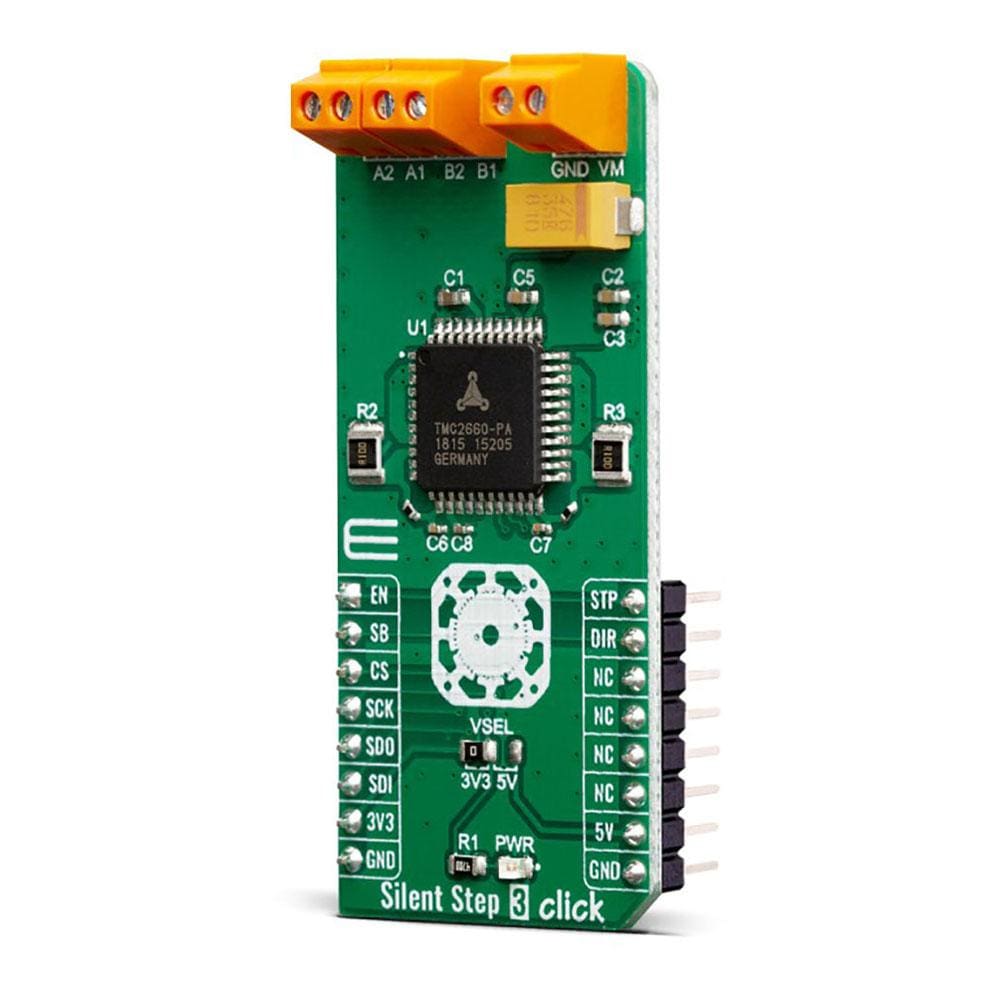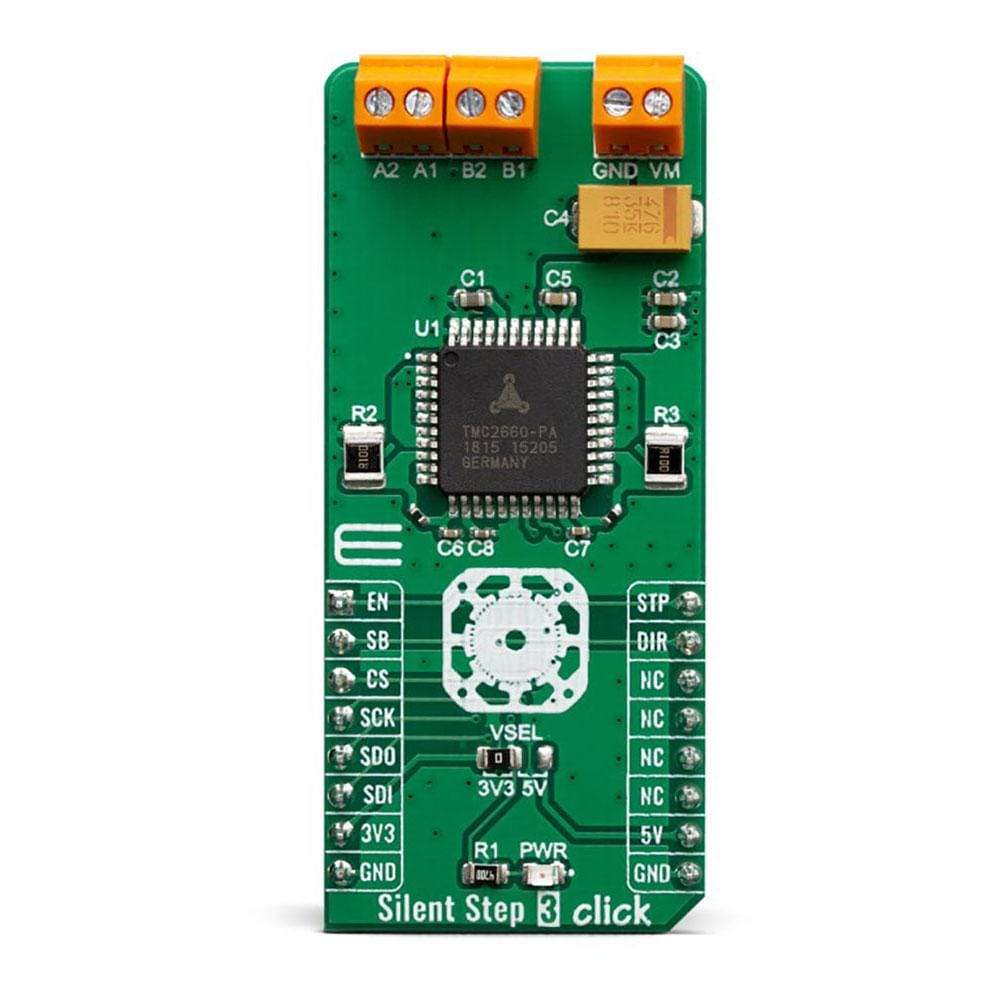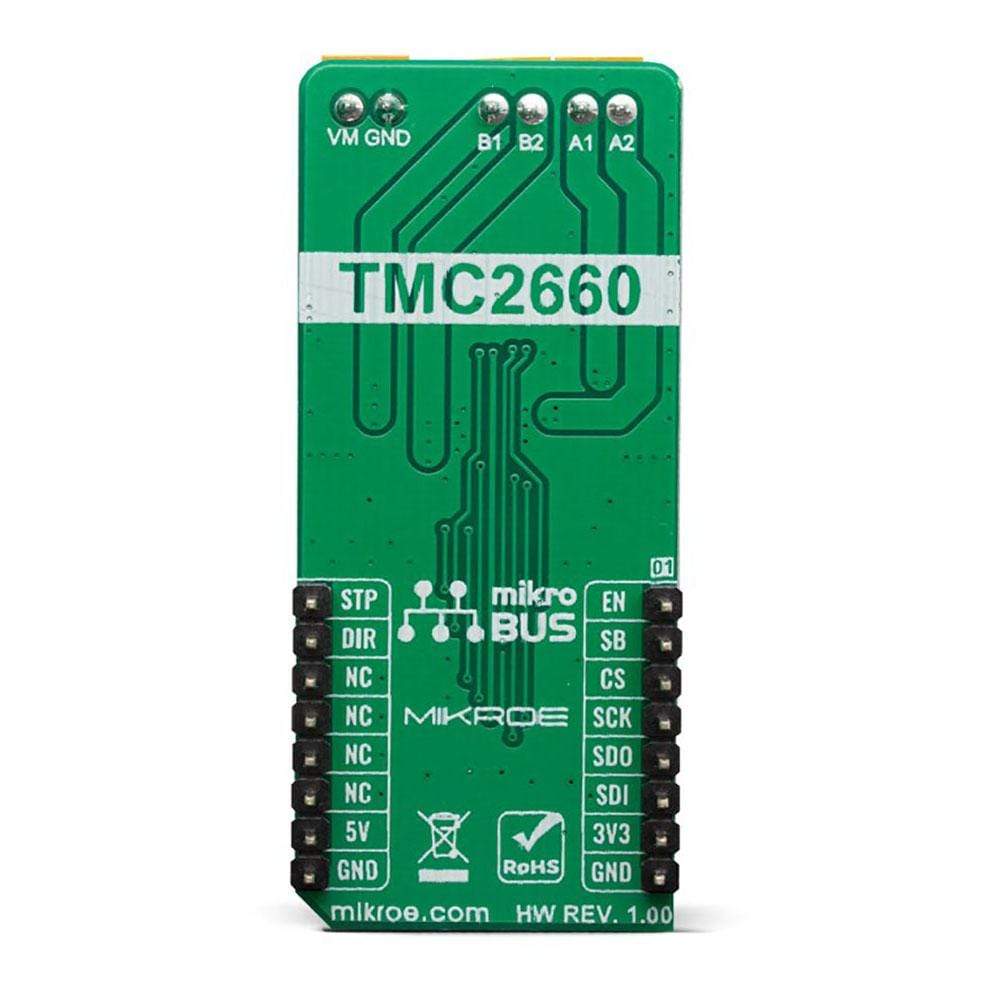


Overview
The Silent Step 3 Click Board™ is the complete integrated bipolar step motor driver solution, rich with many features that allow extremely smooth and silent operation of the connected motor while being able to provide up to 4A peak motor current and withstand up to 30V supply voltage. The specialized TMC2660 IC driver from Trinamic company far exceeds the capabilities of similar step motor drivers that are commonly used. Thereby, the Silent Step 3 Click Board™ is basically the “intelligence and power” between the main MCU, as a motion controller, and the two-phase stepper motor.
The device achieves outstanding performance with a wide range of various step motors, thanks to several technologies featured, such as stallGuard2™ - high precision sensorless motor load detection; spreadCycle™ - highly dynamic motor current control; microPlayer™ - microstep interpolation for increased smoothness with coarse step inputs, and many more.
Downloads
Das Silent Step 3 Click Board™ ist die vollständig integrierte bipolare Schrittmotortreiberlösung mit zahlreichen Funktionen, die einen extrem reibungslosen und geräuschlosen Betrieb des angeschlossenen Motors ermöglichen und gleichzeitig einen Spitzenmotorstrom von bis zu 4 A und eine Versorgungsspannung von bis zu 30 V liefern können. Der spezielle TMC2660 IC-Treiber der Firma Trinamic übertrifft die Fähigkeiten ähnlicher Schrittmotortreiber, die üblicherweise verwendet werden, bei weitem. Dabei ist das Silent Step 3 Click Board™ im Grunde die „Intelligenz und Leistung“ zwischen der Haupt-MCU als Bewegungssteuerung und dem Zweiphasen-Schrittmotor.
Das Gerät erreicht mit einer großen Bandbreite unterschiedlicher Schrittmotoren eine herausragende Leistung dank mehrerer integrierter Technologien, wie etwa stallGuard2™ – hochpräzise sensorlose Motorlasterkennung; spreadCycle™ – hochdynamische Motorstromregelung; microPlayer™ – Mikroschritt-Interpolation für mehr Laufruhe bei groben Schritteingaben und vielem mehr.
| General Information | |
|---|---|
Part Number (SKU) |
MIKROE-3676
|
Manufacturer |
|
| Physical and Mechanical | |
Weight |
0.022 kg
|
| Other | |
Country of Origin |
|
HS Code Customs Tariff code
|
|
EAN |
8606018716517
|
Warranty |
|
Frequently Asked Questions
Have a Question?
Be the first to ask a question about this.



